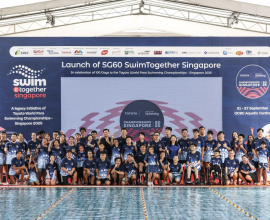A passion for fashion AND a love for all things sustainable! Meet Ian and Eshton, the Singaporean duo protesting textile waste in the fast fashion industry with bespoke kimonos.
Kimonos have a long-standing history with sustainability. Crafting a kimono is a process that takes into account every part of the cloth involved – little to no waste is produced! So it seems fitting that the founders of Syne Singapore, Ian and Eshton, create kimonos as a protest to the fashion industry’s waste.
a passion for fashion.

Ian Sam, 28, and Eshton, 27, have been creatives from the get go. Ian’s time revolves mainly around craft – he spends much of his time testing out new techniques and methods in his many creations. Eshton’s passions include photography, videography and even TikTok. Currently, his TikTok account features loads of food – he’s also the man behind the videos you might see on Syne’s Instagram!
With such creative slants, it might come as no surprise that the duo met at a footwear design competition, looking for a way to practise and exercise their artistic visions. And when both designers came out on top, their friendship was cemented. Together, they further traversed into the fashion industry. But despite landing jobs in competing footwear brands, the pair noticed something the same, unsettling trend: the vast amounts of waste produced by the fashion industry.
“Fashion is one of the largest contributors to waste. With fast fashion brands having a larger impact through social media, our generation and those after us have grown up without much awareness of how our buying habits affect our environment. We felt the need to represent sustainability in a new manner, and also to be a bridge to brands that are often held by contracts, to allow them to venture into the realm of sustainability,” Ian and Eshton said.
Globally, the fashion industry alone is responsible for approximately 92 million tonnes of textile waste each year. That’s the equivalent of a rubbish truck full of clothes being dumped in landfill sites every second!
With so much waste involved in their dreams however, both Ian and Eshton felt compelled toward responsibility. So as a protest against the fashion industry’s waste, the pair started Syne Studio, creating sustainable, bespoke kimonos using discarded material from the fashion industry.
but, why Japanese kimonos?

An underrated symbol of sustainability, Ian and Eshton admire the care that’s taken into crafting a kimono. It’s a process that takes into account every part of the cloth involved – little to no waste is produced!
“Kimonos have always been made in one of the most ethical and sustainable manners. The fabrics and materials used are created with minimal waste, unlike most other apparels, due to the manner in which the fabrics are produced and how the kimono is pieced together.”
At the same time, Ian and Eshton both wanted to see more representation of Asian culture in the fashion industry.
“We have always felt there is a need for more asian representation in the realm of outerwears whether it is in the luxury scene or the streetwear scene. Most of the pieces we see are very much influenced by western fashion.”
crafting a sustainable, bespoke kimono.
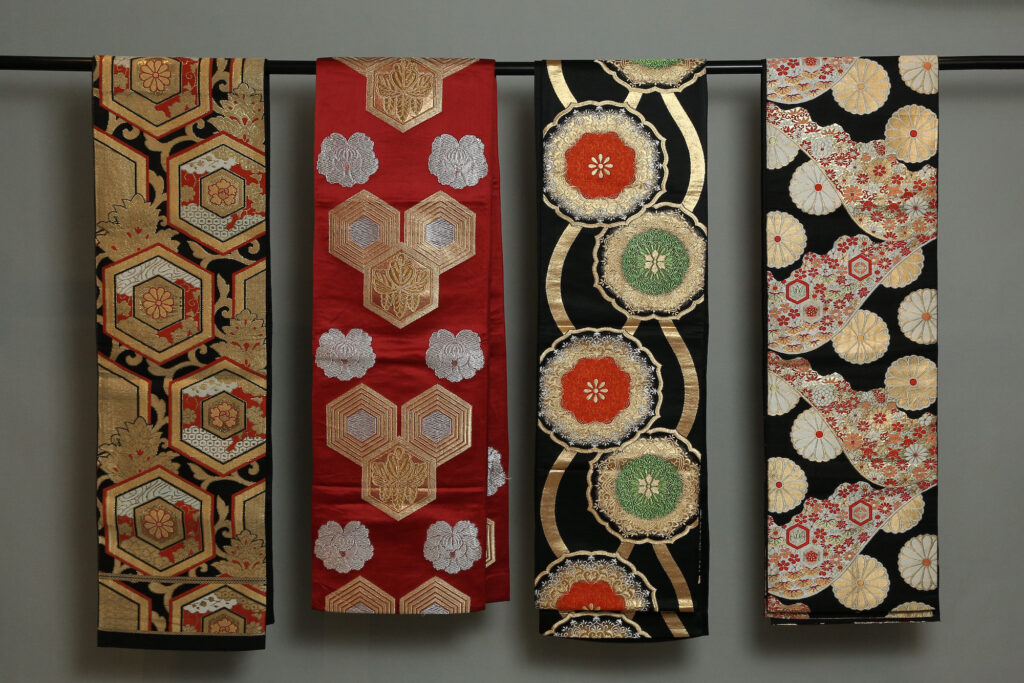
But preaching sustainability in the face of fast fashion can be daunting, which is why Ian and Eshton take the necessary precautions to ensure that their kimonos and products are made from reused materials rather than mass produced materials. From approaching shops to collaborations, Eshton and Ian eases the fashion industry’s waste by making it their own.
“We begin (our process by) sourcing from unwanted and discarded items, and also approaching shops who traditionally have waste when their items or materials are out of season. At the same time, we have positioned ourselves to be able to approach brands to address the very issue we faced when we were in the fast fashion industry. Most brands are stopped by their principal companies or contracts, disallowing them to venture into upcycling or donating their damaged or unwanted products. However, by coming in as a collaborator, the brands are able to keep their traditional brand image, while also addressing the issue of sustainability by working alongside us.”
In addition to collaborations, the two also ensure authenticity in their kimonos, sourcing the kimonos directly from Japan. Despite the pieces being discarded in varying conditions, the duo make do, processing the Japanese kimonos by restoring the fabric, or reusing it if the piece is not fixable.
expanding beyond sustainable fashion.
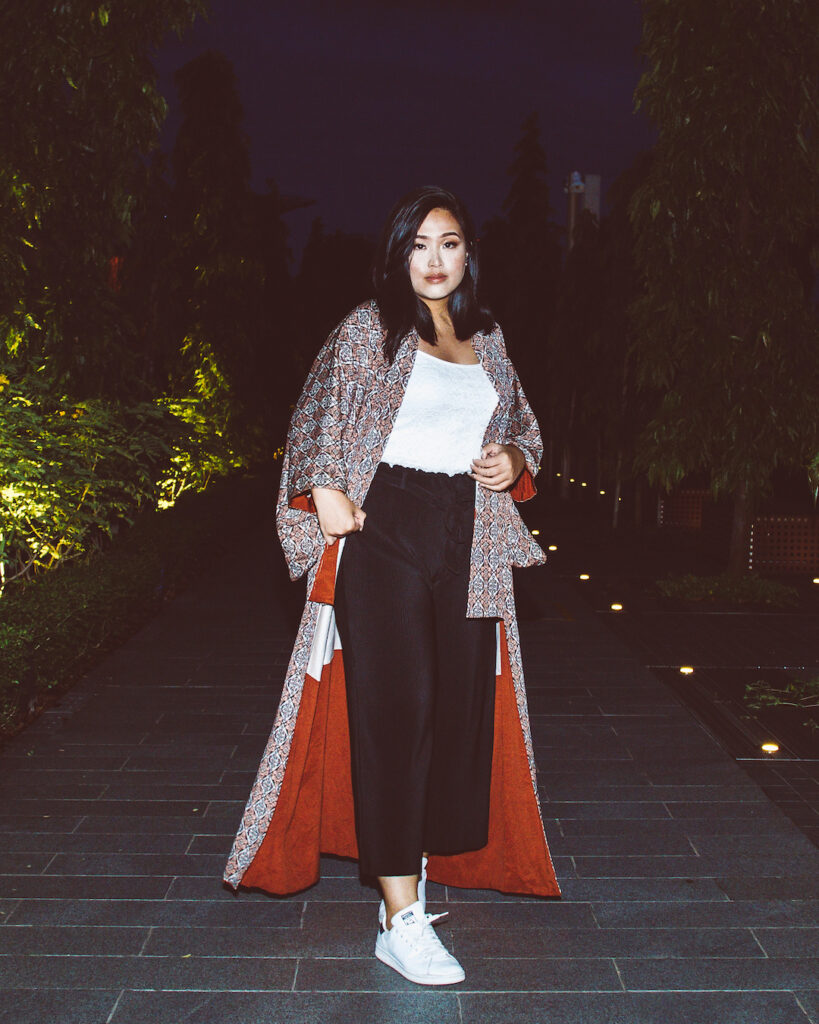
Beyond kimonos, the pair have also had some interesting collaborations with some acclaimed brands. Ian and Eshton have worked Michelin-starred restaurant Cloudstreet, to create uniforms that are sustainable and fashionable.
“The jackets were made from deadstock fabrics and combined with our vintage kimono scrap fabrics. Each piece was a one of one creation as the patterns of the kimono scraps differed in each jacket made. The patterns were subtle highlights, being placed in the inner parts of the lapel and the inner sleeve. This played to the subtle luxury that Cloudstreet represents.”
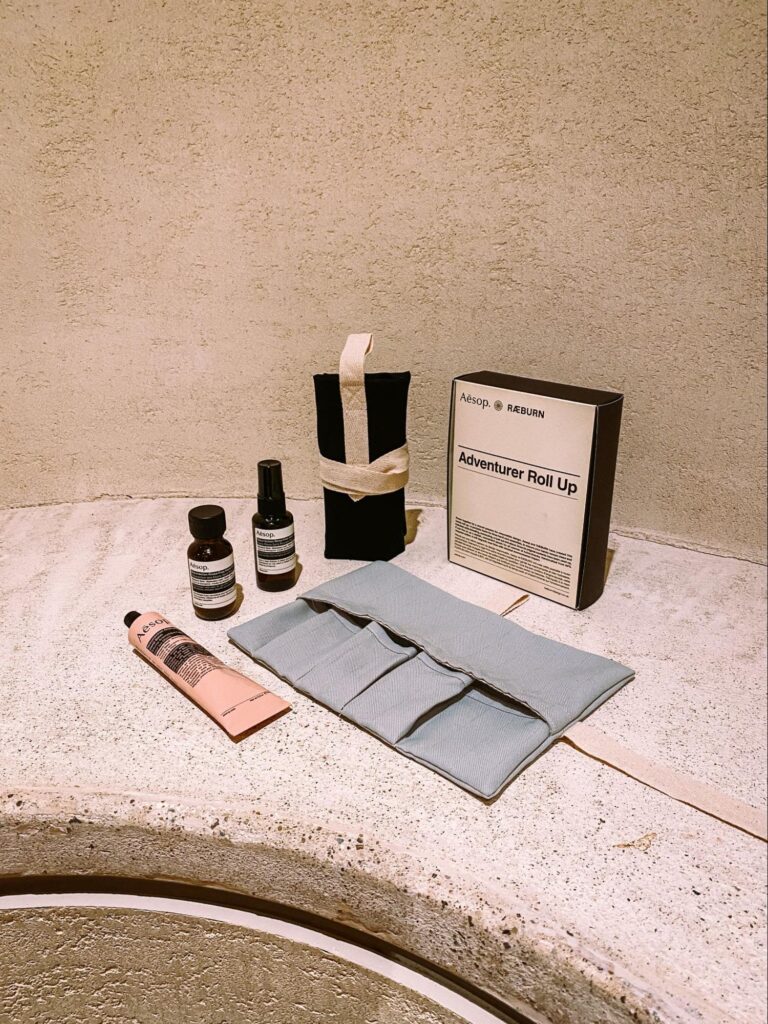
And although sustainable fashion remains the forefront of their work, that hasn’t stopped Syne Singapore from exploring creations beyond fashion, such as turning Obi Belts into table runners (as a way to showcase each Obi Belts’ elaborate workmanship), or working with famous brand Fjallraven, helping them upcycle their damaged backpacks into card holders! They have also worked with Aesop to produce custom pouches.
fashion & sustainability in singapore.

Working on the frontline of a cause doesn’t come easy though, especially in Singapore. Not only do Ian and Eshton have to resolve logistical obstacles such as space constraints, the pair are also working against a strong current of fast fashion and increasing waste.
“Singaporeans live in an extremely curated society, so we do not take note of the direct impact our waste and buying habits have on our environment. Our trash often gets cleaned away instantly, and our society is affluent enough to not think about purchasing with thought.
All these things come together to make a country that sees the need for sustainability as something that is of low importance. There is definitely a growing amount of people who are becoming more aware of how important this is, however, it is still rarely seen in mainstream media and does not often have a strong support system by the masses. We have to raise awareness by building stronger and larger communities supporting each other to produce with thought.”
exclusive, custom-made pieces.
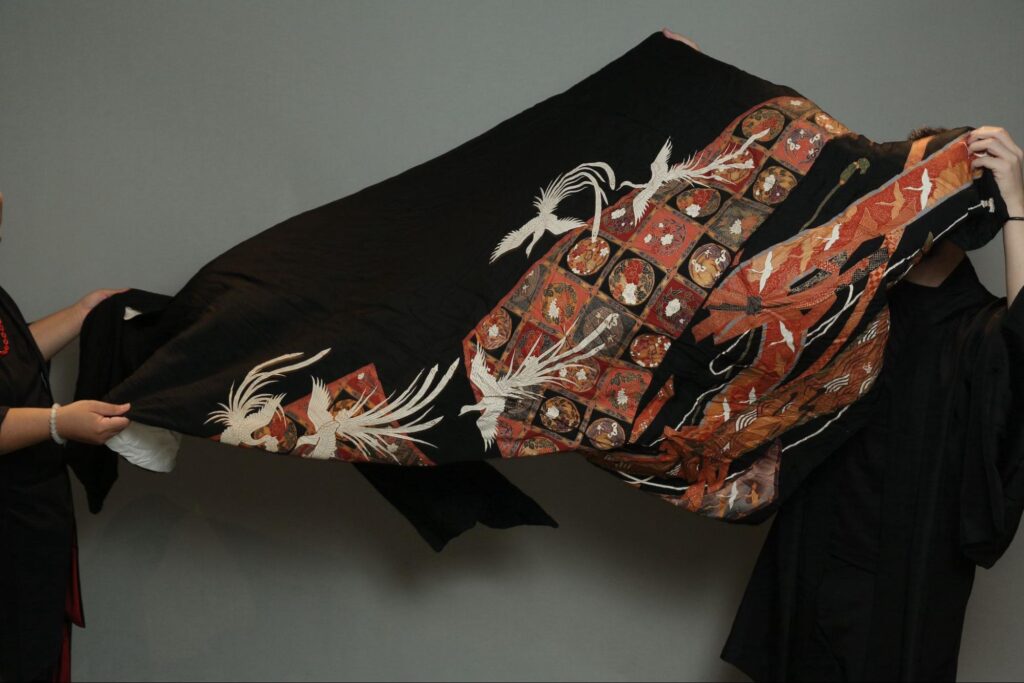
Syne Singapore not only offers customisations, made-to-measure pieces, and alteration services, but also pieces that bear so much historical and cultural significance, you might just choose to hang it up as a showpiece instead!
For instance, Syne Singapore creates pieces bearing techniques from the early Heian Period:
“We have a piece that combines multiple motifs layered upon each other, showcased on a Tomesode, a type of formal dress kimono only worn by married women of the highest rank. It showcases a Phoenix motif placed upon a background of flowers and waves. The seigaiha, or wave, is a pattern of layered concentric circles creating arches, symbolic of waves or water and representing surges of good luck. It can also signify power and resilience.
The motifs are made using a mixture of dyeing techniques and Japanese embroidery (nihon shishu) which is an embroidery technique that goes back more than one thousand years, using gold threads. According to historians, from the early Heian Period Japanese embroidery was primarily used for decorating the costumes of the Ladies of the Court. During these early stages, shishu was exclusively available to this very select group; only the highest ranks of society could afford such costly work.”
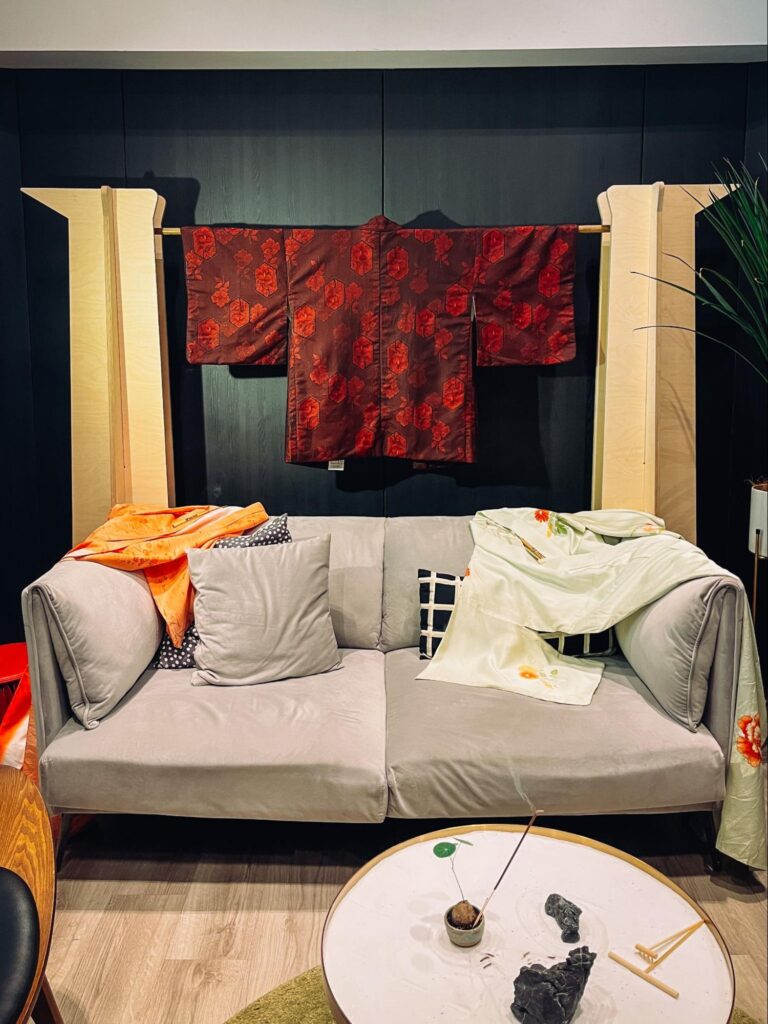
Sustainability can come easy – if you know where to look for it! Ian and Eshton’s works are functional works of art that make a statement.. Both fashionably and sustainably! So if you’re looking to don a Japanese kimono that’s both one-of-a-kind and environmentally-friendly, be sure to check out Syne Singapore on Facebook and Instagram to get your very own sustainably-made kimono!
Enjoyed this article? Check out more sustainable fashion options with these 12 thrift shops in Singapore, or learn about Singapore’s specially curated, stress-relieving, therapeutic gardens here!




